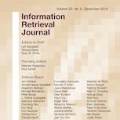IR drop constraint is a fundamental requirement enforced in almost all chip designs. However, its evaluation takes a long time, and mitigation techniques for fixing violations may require numerous iterations. As such, fast and accurate IR drop prediction becomes critical for reducing design turnaround time. Recently, machine learning (ML) techniques have been actively studied for fast IR drop estimation due to their promise and success in many fields. These studies target at various design stages with different emphasis, and accordingly, different ML algorithms are adopted and customized. This paper provides a review to the latest progress in ML-based IR drop estimation techniques. It also serves as a vehicle for discussing some general challenges faced by ML applications in electronics design automation (EDA), and demonstrating how to integrate ML models with conventional techniques for the better efficiency of EDA tools.
翻译:几乎在所有芯片设计中,IR下降限制是执行的一项基本要求。然而,它的评估需要很长时间,纠正违规现象的缓解技术可能需要许多迭代。因此,快速和准确的IR下降预测对于减少设计周转时间至关重要。最近,由于机器学习技术的希望和在许多领域的成功,对机器学习技术进行了积极研究,以快速IR下降估计。这些研究在不同设计阶段以不同的重点为目标,因此采用了不同的ML算法并定制了不同的ML算法。本文件审查了基于ML的IR下降估计技术的最新进展。它也成为讨论ML应用在电子设计自动化(EDA)中面临的一些一般性挑战的工具,并演示如何将ML模型与常规技术相结合,以提高EDA工具的效率。




